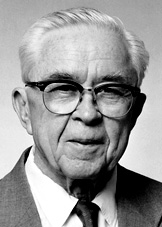
Edward Butts Lewis was an American geneticist, a corecipient of the 1995 Nobel Prize in Physiology or Medicine. He helped to found the field of evolutionary developmental biology.

Edith Taliaferro was an American stage and film actress of the late 19th and early 20th centuries. She was active on the stage until 1935 and had roles in three silent films. She is best known for portraying the role of Rebecca in the 1910 stage production of Rebecca of Sunnybrook Farm.

Charla Sue Doherty was an American film and television actress who appeared on the first season of the long-running soap opera Days of Our Lives.
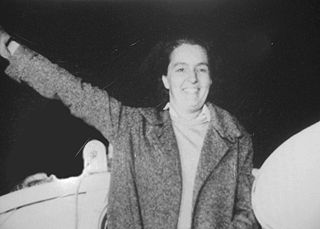
Jeannette Ridlon Piccard was an American high-altitude balloonist, and in later life an Episcopal priest. She held the women's altitude record for nearly three decades, and according to several contemporaneous accounts was regarded as the first woman in space.

The Elizabeth Cady Stanton House is a historic house at 32 Washington Street in the village of Seneca Falls, New York. Built before 1830, it was the home of suffragist Elizabeth Cady Stanton (1815-1902) from 1847 to 1862. It is now a historic house museum as part of Women's Rights National Historical Park. It was declared a National Historic Landmark in 1965.

Elisha Foote was an American judge, inventor, and mathematician. He served as the eleventh United States Commissioner of Patents from 1868 to 1869 and was responsible for launching an investigation into previous mismanagement of the post. He was married to the scientist and women's rights campaigner Eunice Newton Foote.

The Mid-American Conference Men's Basketball Player of the Year is an award given to the most outstanding men's basketball player in the Mid-American Conference (MAC). The award was first given following the 1967–68 season. Four players have won the award multiple times: Tom Kozelko, Ron Harper, Gary Trent and Bonzi Wells. Trent is the only player to have been honored as player of the year three times (1993–95). There have been no ties, nor has any player from the MAC ever won any of the national player of the year awards.

Helen Redfield, was an American geneticist. Redfield graduated from Rice University in 1920, followed by earning her Ph.D. in zoology from the University of California, Berkeley in 1921. While at Rice, she worked in the mathematics department. She joined the faculty of Stanford University in 1925 and that same year she became a National Research Fellow at Columbia University. In 1926 she married Jack Schultz, the couple had two children. Redfield retained her maiden name upon her marriage. In 1929 she worked as a teaching fellow at New York University. Ten years later she worked as a geneticist in the Kerckhoff Laboratory at the California Institute of Technology. Starting in 1942, during World War II, she worked as a lab scientist at Cold Spring Harbor Laboratory during the summer. From 1951 until 1961 she served as a research associate at the Institute for Cancer Research.

Josephine Elizabeth Tilden was an American expert on pacific algae. She was the first woman scientist employed by the University of Minnesota. Tilden established a research station in British Columbia which lasted only until 1906. When Tilden became an assistant Professor in 1903, she was the first female scientist employed by the University of Minnesota. In 1910, despite not having a doctorate, Tilden was promoted to full professor.
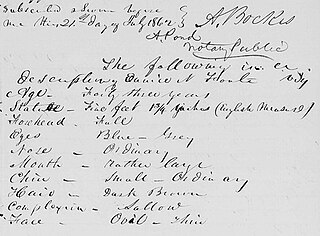
Eunice Newton Foote was an American scientist, inventor, and women's rights campaigner. She was the first scientist to confirm that certain gases warm when exposed to sunlight, and that therefore rising carbon dioxide levels could increase atmospheric temperature and affect climate, a phenomenon now referred to as the Greenhouse effect. Born in Connecticut, Foote was raised in New York at the center of social and political movements of her day, such as the abolition of slavery, anti-alcohol activism, and women's rights. She attended the Troy Female Seminary and the Rensselaer School from age 17–19, gaining a broad education in scientific theory and practice.
Sheldon Clark Reed was an American biologist and geneticist who coined the term genetic counseling and advocated for the wider use of genetic counseling as a means to educate the public.
Bill Byrne was a sports entrepreneur who founded the first women's professional basketball league in the United States. Byrne was born in Stoutsville, Ohio and founded the National Scouting Association (NSA) which represented student-athletes from the collegiate and amateur ranks to seek professional football opportunities. He then founded the Columbus Bucks, a semi-professional football team, playing in the Midwest Football League (MFL) and served as commissioner. Byrne was hired by the Chicago Fire of the start-up World Football League in 1974 as the Player Personnel Director. When that team folded toward the end of the season, Byrne then went to the Shreveport Steamer for the 1975 WFL season in a similar role. The World Football League folded toward the end of the season.

Dorothy Houston Jacobson was an American political scientist and educator. She was a co-founder and chair of the Minnesota Democratic–Farmer–Labor Party, and served as Assistant Secretary for International Affairs at the United States Department of Agriculture from 1964 to 1969, during the Johnson administration.

Helen Emily Inkster was a former Miss Wyoming who acted on the stage, in films, and on television.
Eunice Powers Cutter was an American teacher, who was active in the Abolistionist movement, and wrote one of the most popular children's textbooks on anatomy in the Antebellum period. She was born in Massachusetts and educated there and in Connecticut before becoming a teacher in 1843. After her marriage, she assisted her husband in writing university-level anatomy textbooks. She presented lectures on hygiene to women's groups and community gatherings through the mid-1850s and published textbooks on anatomy aimed at grammar school children. In 1856 or 1857, the family moved to Kansas and participated with John Brown in the efforts to ensure that Kansas Territory entered the union as a free state.
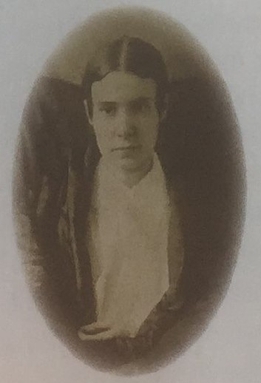
Mary Townsend was an early American science writer and abolitionist. Born into a prominent Philadelphia Quaker family, she, her parents, and her siblings were educated at the Westtown School. From childhood, Townsend had an interest in insects. She conducted various studies and experiments, examining specimens under a microscope and evaluating their habits. Because illness and the loss of her sight kept her confined to her bed, Townsend taught herself how to write with a braille-like card. In 1844, she published Life in the Insect World: or, Conversations upon Insects, between an Aunt and Her Nieces, which became popular and influential, particularly in influencing other women to pursue science.

Esther Tuckerman Allen Gaw was an American psychologist and college administrator. She was Dean of Women at Ohio State University from 1927 to 1944.
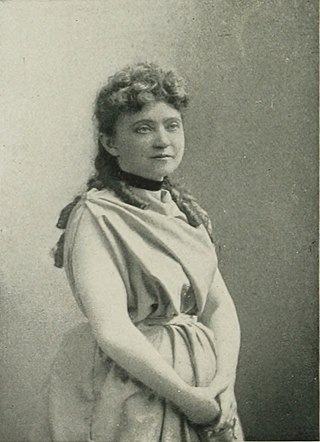
Laura Rosamond White was an American author and editor whose work was affiliated with the Woman's Relief Corps, Woman's Christian Temperance Union (W.C.T.U.), and the Non-Partisan National Woman's Christian Temperance Union. She was also regarded as the poet of Geneva, Ohio, and served as city editor of the Geneva Times.
Vera Radaslava Dyson-Hudson was an American anthropologist. Originally interested in Drosophila genetics and a winner of the 1947 Westinghouse Science Talent Search, she switched towards anthropology after meeting her husband Neville Dyson-Hudson. A 1955 Guggenheim Fellow, she did two field studies in east Africa, focusing on the Karamojong people and Turkana people. She was co author of Rethinking Human Adaptation: Biological and Cultural Models (1983) and HRAFlex (1985). Originally a lecturer at the University of Khartoum, she worked at Johns Hopkins University, Binghamton University, and Cornell University as a professor, retiring from the last school as a professor emeritus.

















